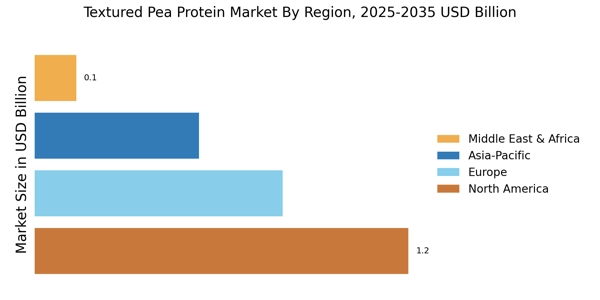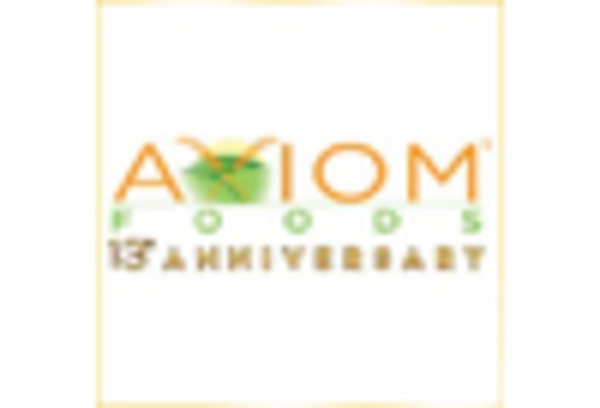Innovations in Food Technology
Innovations in food technology are playing a crucial role in shaping the Textured Pea Protein Market. Advances in processing techniques have enhanced the texture and flavor profiles of pea protein, making it more appealing to consumers. These technological improvements enable manufacturers to create high-quality products that meet consumer expectations for taste and texture. Furthermore, the introduction of new formulations and blends is likely to attract a broader audience, including those who may not typically consume plant-based proteins. As a result, the Textured Pea Protein Market is expected to benefit from these innovations, leading to increased market penetration.
Versatility in Food Applications
The versatility of textured pea protein in various food applications is another significant driver for the Textured Pea Protein Market. This protein can be utilized in a wide range of products, including meat alternatives, snacks, and dairy substitutes. Its ability to mimic the texture of meat makes it particularly appealing to manufacturers aiming to create plant-based meat products. The market for meat alternatives is expected to reach substantial figures, with projections indicating a value of over 27 billion in the coming years. This versatility not only enhances product offerings but also supports the expansion of the Textured Pea Protein Market.
Sustainability and Ethical Consumerism
Sustainability and ethical consumerism are increasingly influencing purchasing decisions, thereby impacting the Textured Pea Protein Market. Consumers are becoming more concerned about the environmental impact of their food choices, leading to a preference for sustainable protein sources. Textured pea protein, being plant-based, is perceived as a more environmentally friendly option compared to traditional animal proteins. Research indicates that plant-based diets can significantly reduce carbon footprints, which resonates with eco-conscious consumers. This shift towards sustainability is likely to drive demand for textured pea protein, positioning the Textured Pea Protein Market favorably in the evolving food landscape.
Rising Vegan and Vegetarian Populations
The growing population of vegans and vegetarians is likely to contribute significantly to the Textured Pea Protein Market. As more individuals adopt plant-based diets for ethical, environmental, or health reasons, the demand for alternative protein sources continues to surge. Recent statistics suggest that the number of people identifying as vegan has increased by over 300% in the last decade. This demographic shift indicates a robust market potential for textured pea protein, as it serves as a key ingredient in many plant-based products. Consequently, the Textured Pea Protein Market is poised for growth as it caters to this expanding consumer base.
Health Consciousness and Nutritional Awareness
The increasing health consciousness among consumers appears to be a pivotal driver for the Textured Pea Protein Market. As individuals become more aware of the nutritional benefits associated with plant-based proteins, the demand for textured pea protein is likely to rise. This protein source is rich in essential amino acids, making it an attractive alternative to animal proteins. Recent data indicates that the plant-based protein market is projected to grow at a compound annual growth rate of approximately 7.5% over the next few years. This trend suggests that consumers are actively seeking healthier dietary options, thereby propelling the growth of the Textured Pea Protein Market.


















Leave a Comment